Through the Active Cities project, three city partners are experimenting with activity tracks, aiming to encourage local people to adopt active transport modes.
Activity tracks represent innovative and engaging methods to promote active transport modes within cities. Local authorities and organisations can design and alter streets, bike paths, or routes in order to appeal to specific demographics including children, families, and the elderly population. These active mobility corridors often include enhanced safety features, resulting in safer, accessible, and more inclusive spaces for local people to incorporate active mobility into their daily and weekly journeys.
Through the Active Cities project, three city partners are experimenting with activity tracks, aiming to encourage local people to adopt active transport modes.
In this article, we take a closer look at the work being carried out in Aarhus, Lund, and Bergen, exploring how the cities are implementing activity tracks to promote an active mobility culture among their populations.
Aarhus, Denmark: Gustav the bird helps with traffic safety!
In the Danish city of Aarhus, a new mobility hub concept aimed at promoting active mobility and reducing car-oriented commuting is being trialled. Within the Tangkrogen Mobility Hub, an activity track has been introduced, aimed at encouraging children and families to walk regularly in the area.

Local promotion for Gustav the bird!
To encourage children and families to walk regularly through the area, the local team have created a fun, appealing character. As pedestrians enter the zone, they will be introduced to Gustav – a bird who is unable to fly and must learn how to walk safely and responsibly through traffic-dense areas. Along the route, children (and parents) can interact with Gustav, learning more about his story as they progress through the trail via signage and floor markings. The team at Aarhus Kommune have also built a nest feature for Gustav, allowing passers-by to immerse themselves in the story and take shelter when needed.
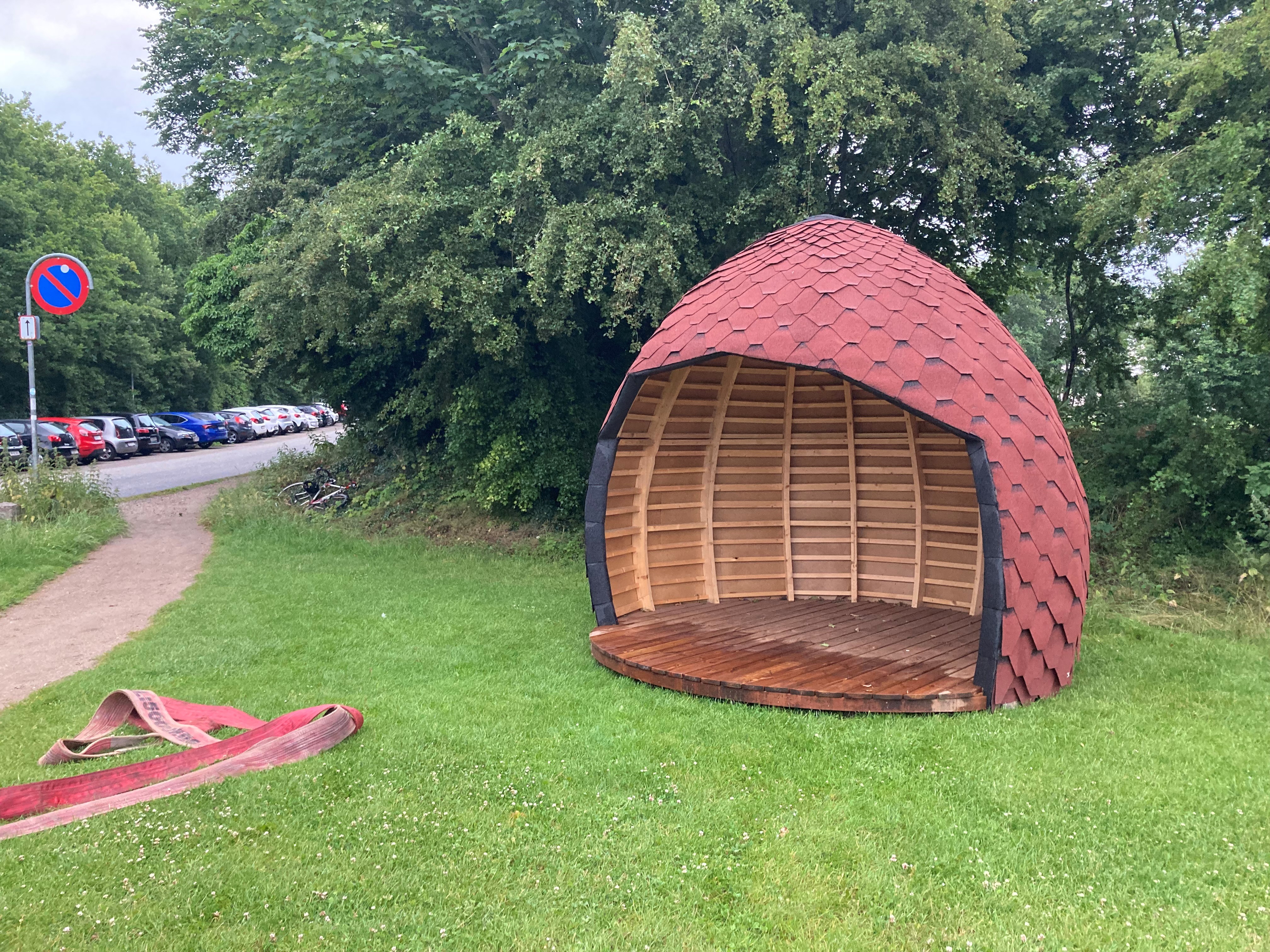
This quirky, fun example of an activity track relates to the wider objectives of the Aarhus pilot activities within the Active Cities project, as it encourages increased numbers of local people to make use of the mobility hub in the area. It is hoped that not only will the activity track lead to an increase in active travel among the population, but also teach children and families important lessons on road safety. It is expected that once complete, the installation will result in increased usage of the mobility hub, as children positively influence their parents to interact with Gustav.
Lund, Sweden: Creating spaces for the young and old to come together
In the Swedish city of Lund, results from a recently conducted survey highlighted that some local people feel uncomfortable and unsafe when walking in certain places. The area selected for the installation of the activity tracks features many straight paths with few areas to rest and meet, such as benches. This can dissuade the local elderly population and families from using the area and maintaining active transport modes, due to the increased need for regular rest and connection.
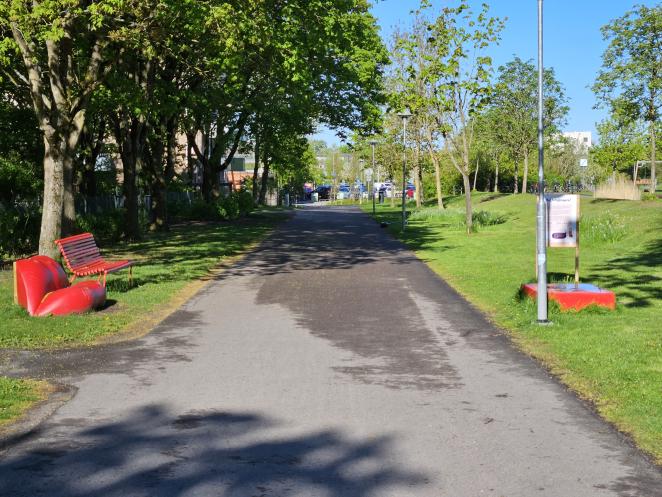
Lund's activity track features more opportunities to rest and connect
The path chosen for the activity track is situated next to a school, so is often frequented by schoolchildren and families, while it is an area popular with older members of the community. The objective of this installation was to create a route where both children and the elderly can feel safe and comfortable using it to walk, cycle, and come together. The track now features increased benches and opportunities to rest and spend time together.
In the same area, there is a large, busy road that creates a barrier for school children who have regular activities on both sides. In order to cross the road, there is a traffic light crossing, or a walking and cycling tunnel. Due to the busyness and associated dangers of the road, the pedestrian tunnel represents a safer and more attractive option for local school children to access their activities on both sides. For this reason, the team at Lunds Kommun wished to test if the children would be more likely to use the tunnel if it was made more appealing and attractive.
The area in question has been designated as a potential future pedestrian zone, therefore representing an optimal location to test these temporary measures aimed at encouraging increased and enhanced walking. The testing phase is now complete, with a fresh survey distributed to gather feedback on the various installations in the area.
So far, the Lunds Kommun team have received encouraging feedback from passers-by and users of the area. The survey results are expected to compliment these opinions, while allowing the team to identify areas for further improvement and change.
Students from the local school have been heavily involved throughout the process, with workshops and walking interviews providing opportunities to share their opinions and report their feedback. The cooperation with the school and local library has been a highlight of the process so far, and despite slight initial complications related to weather and street paint, the installation is on track to provide a vibrant and engaging area for students, families and elderly people to walk safely and comfortably in the area.
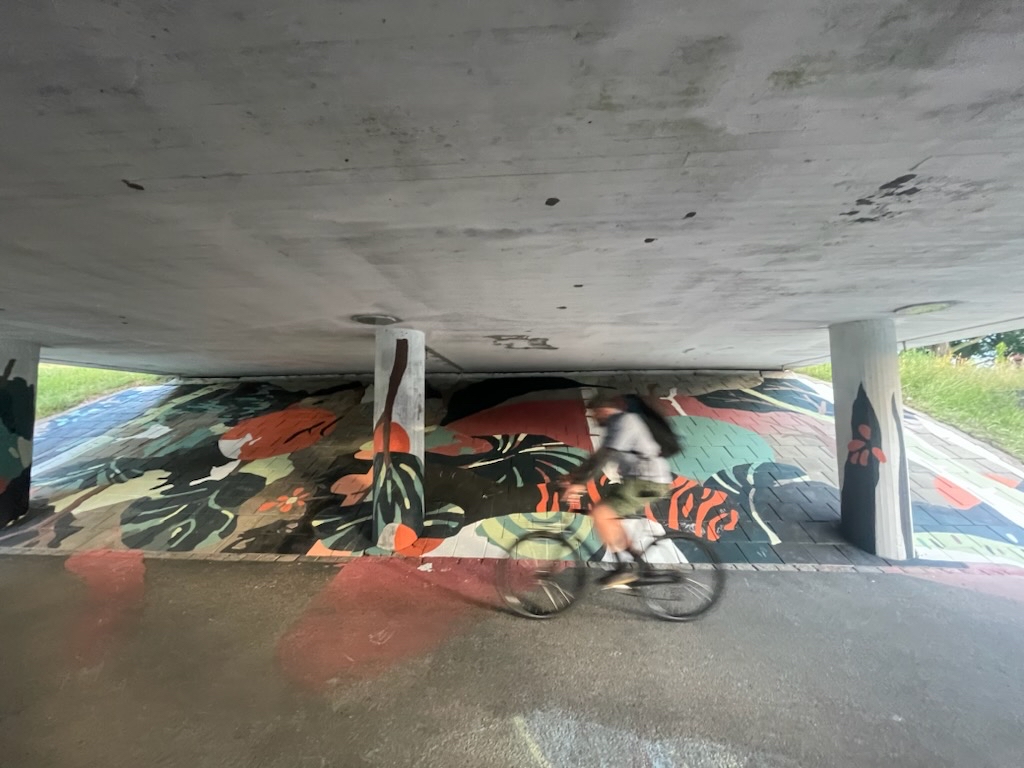
Bergen, Norway: Activity tracks designed by local children
In the Norwegian city of Berge, the idea for an activity track came about following the establishment of a temporary playground in the Nordnes area. As the new facility is situated slightly outside the city centre, an opportunity emerged to create a fun activity track aimed at encouraging more children and families to access the playground on foot. Additionally, an engaging activity route from the city centre is likely to draw more people to the area, resulting in increased usage.
The establishment of an activity track fits in with the wider Active Cities objective for Bergen, which is to inspire more people to walk in the city. By creating an active route, the team behind the Bergen pilot hope to attract more children, young people, families, and others to the area, while creating a more engaging journey. It is also in the local interests to test small-scale, temporary, cost-effective solutions, with the creation of an activity track representing an innovative way of achieving this.
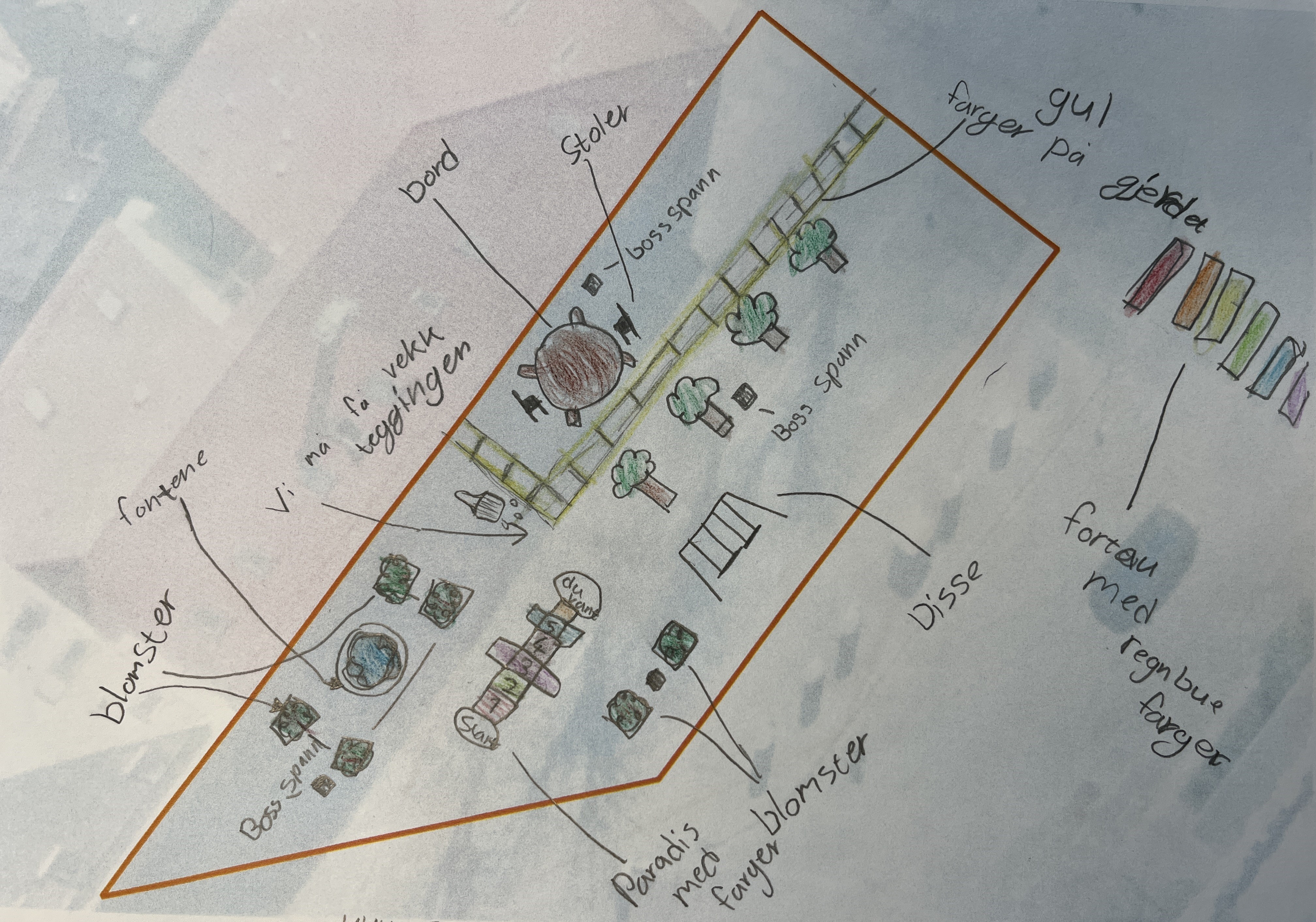
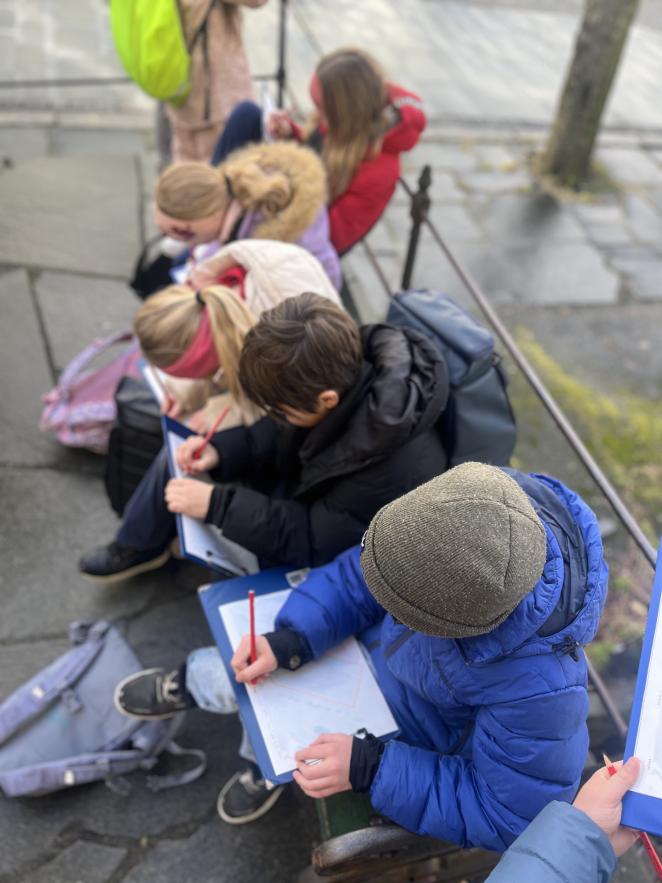
City planners of the future in Bergen!
The Bergen team has noted that when children and young people are involved in shaping their surroundings, they feel more connected and take greater responsibility for them. In order to involve local children in the process and draw inspiration from their creativity, five workshops have been held, during which local schoolchildren were given the opportunity to reflect and brainstorm ideas of what features would encourage them to make use of the route and want to return. Participants then illustrated their ideas and submitted them to the planning team. All concept drawings have now been collected and reviewed, and the team is determining which ideas can be feasibly implemented along the route.
So far, the collaboration with the local children has worked very well. They first received an introduction to construction techniques before being shown the public space. This provided an opportunity to start thinking of ideas and discussing them openly. The children were then taken to the space in question to make their own observations and commence the drawing process.
One crucial takeaway for the Bergen team is that things take time. Even though they are only aiming to implement small, low-cost interventions, an overview of area responsibilities and clarifications around public-space use applications are still required.
Having said this, the involvement of local school children has proven to be a true inspiration. The team have been impressed by how reflective the pupils are, considering all aspects that should feature in public spaces. The children have not focused solely on their own needs and fun elements, also considering what others might need and appreciate, including benches for the elderly, trash cans, smoke-free zones, bike racks, and aesthetic improvements such as painting fences, refurbishing building facades, and fixing poor surfaces, among others.
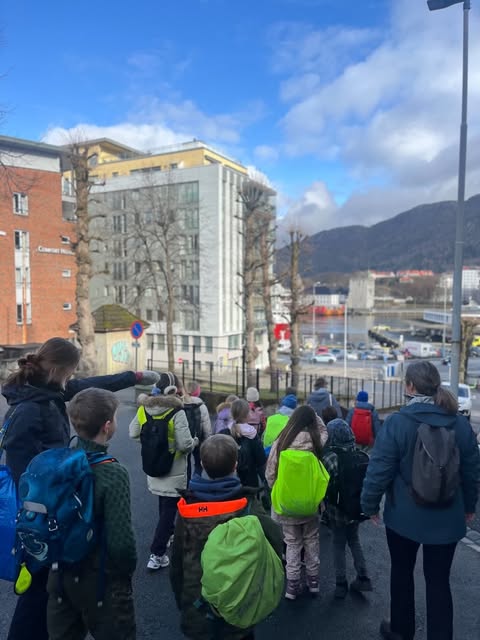
The activity tracks in Aarhus, Lund, and Bergen demonstrate how creative, community-driven design can help foster a stronger culture of active mobility in urban environments. By focusing on inclusivity, safety, and engagement, these three North Sea Region cities are turning everyday walking and cycling routes into dynamic, user-friendly experiences that appeal to all age groups.
